Saturation, often considered the secret sauce in the music production world, can be the game-changer your tracks have been craving.
Yet, its power in shaping and enhancing a track is undeniable.
As a music producer, it’s paramount to delve deep into what saturation is, how it impacts your tracks, and the various ways it can be harnessed.
By understanding this concept, you’ll be better equipped to add depth, warmth, and character to your mixes.
This will help set you apart in the ever-competitive world of digital music.
That’s why, in today’s article, we’ll be breaking down:
- What is saturation in music ✓
- The crucial role of saturation in music production ✓
- Analog vs. digital audio saturation ✓
- Different types of saturation & their unique characteristics ✓
- The science driving harmonic distortion and saturation ✓
- Professional tips & tricks for applying saturation in your tracks ✓
- Much more to help you master saturation ✓
After this information-packed guide, you’ll be able to easily navigate the world of saturation and apply its principles to enhance your music and top the charts.
If you want to add depth and intrigue to your mixes like the top professionals, you’ve come to the right place.
So, let’s dive in…
Table of Contents
- What is Saturation in Music? Breaking it Down
- Why Saturation is Crucial for Digital Music Producers
- The Key Differences Between Analog and Digital Audio Saturation
- The Types of Saturation: A Deep Dive
- The Science Behind Saturation
- Practical Applications of Saturation in Music Production
- Saturation in Music: Final Thoughts
What is Saturation in Music? Breaking it Down
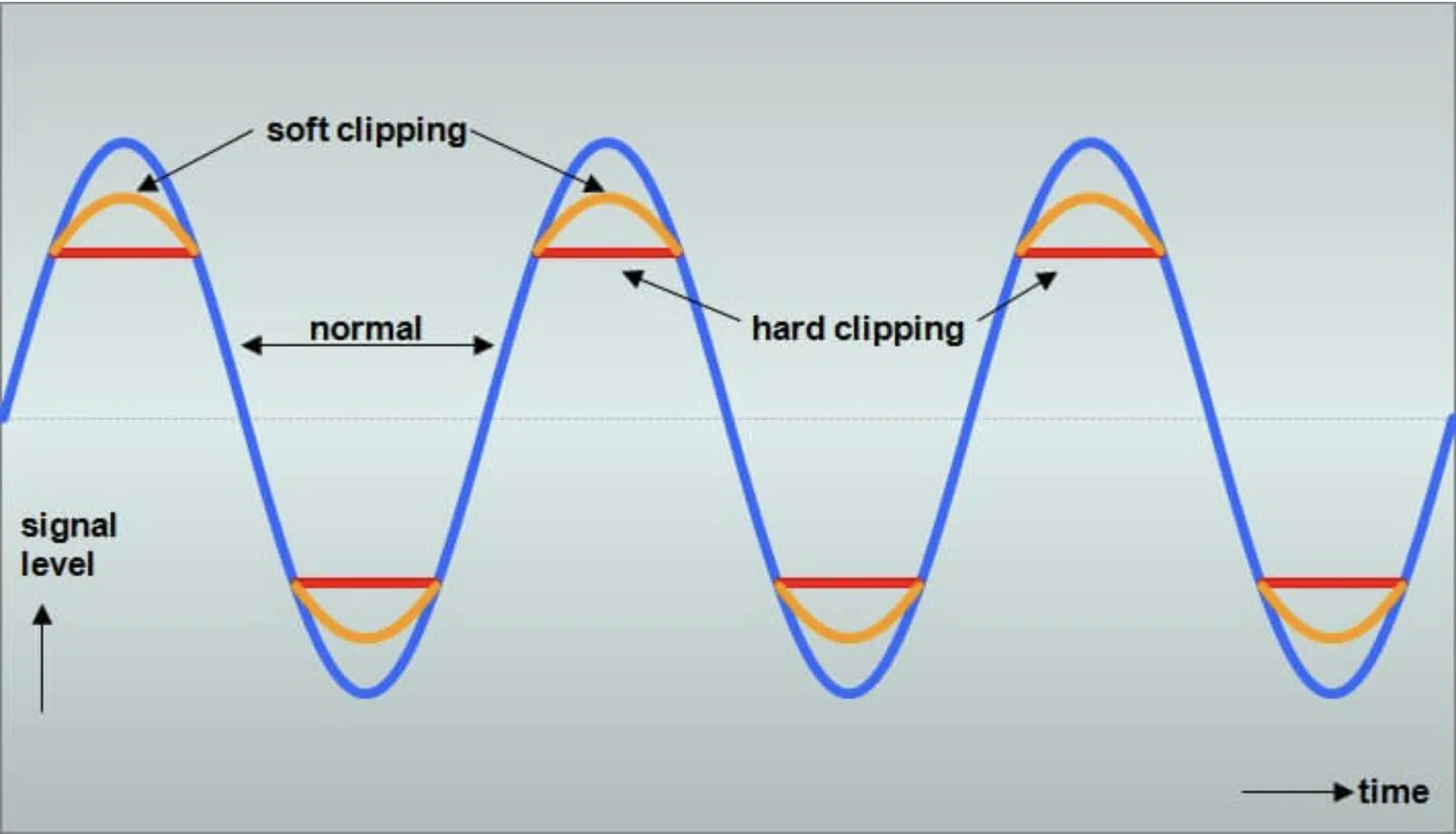
At its core, saturation (in music) refers to the process of introducing harmonic distortion into a sound or track to give it warmth, character, and depth.
Initially, saturation in music occurred when recording onto analog tape machines.
When the incoming electrical signal was too strong, it would push the tape to its limits, causing a pleasing form of distortion.
This wasn’t an intentional effect at first, however, music producers quickly fell in love with the warm sound it imparted as it was super appealing.
In today’s digital music world, saturation plugins replicate this analog hardware sound 一 allowing us to add that same warmth and character to our beats.
All without the need for bulky, expensive analog equipment.
These saturation plugins expertly mimic the harmonic distortion caused by:
- Tape machines
- Tube amps
- Other analog devices
Now, as a digital music producer (especially in genres like hip-hop and trap), understanding saturation can be your golden ticket to crafting legendary tracks.
Not only does it give your complex sound a classic edge, but it also enhances the perceived loudness without increasing the actual volume.
Next, let’s dive into how exactly saturation can do that.
Why Saturation is Crucial for Digital Music Producers
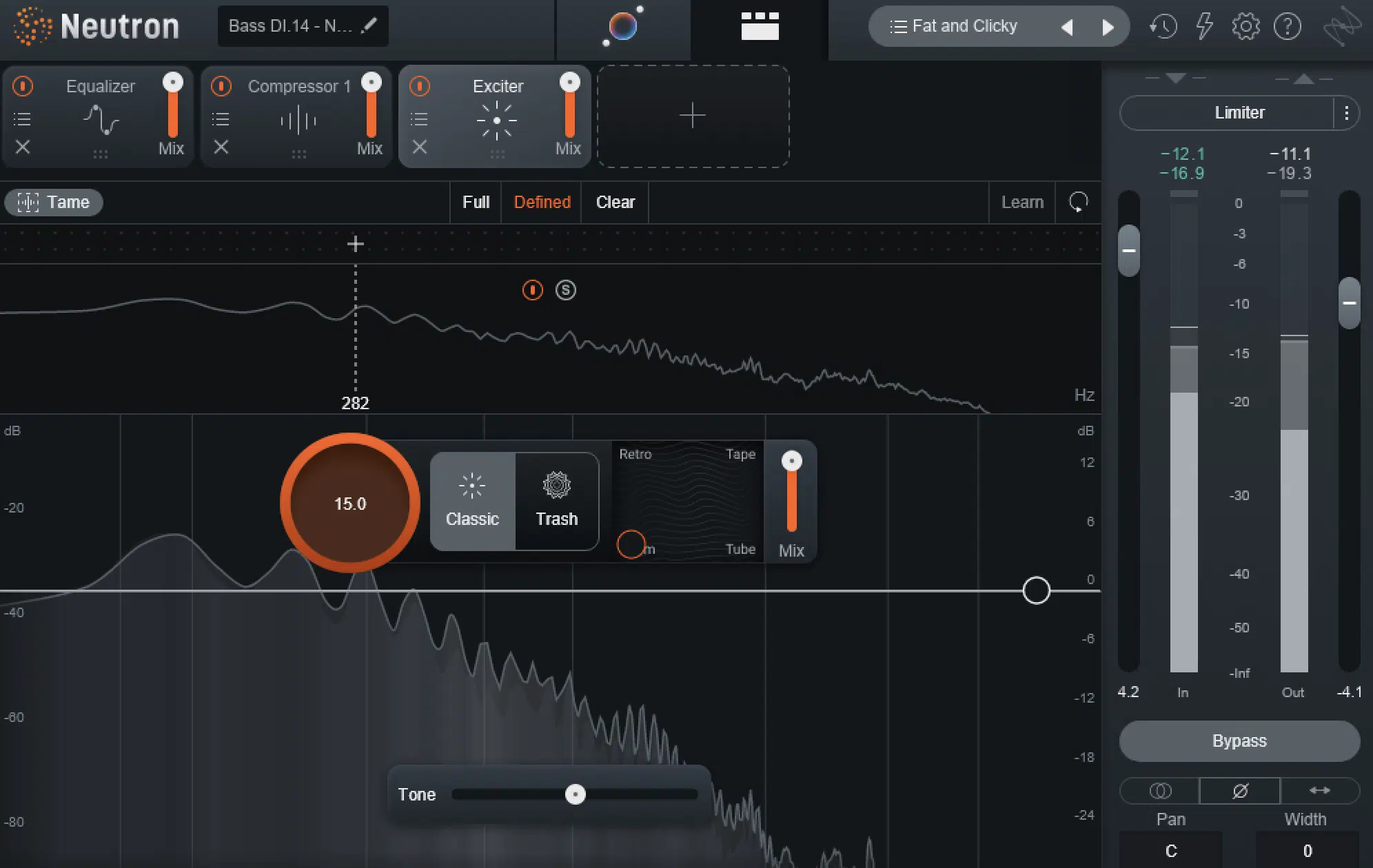
In the world of digital audio production, clarity is often king.
Yet, many music producers find that their tracks can sometimes sound too clean, lacking the depth and warmth associated with analog recordings.
Enter saturation: our trusty tool to add that desired sound to our tracks.
Saturation provides harmonic richness, making individual elements of a mix sound fuller and more cohesive (a.k.a. mix saturation).
For hip-hop and trap genres, where beats and bass are fundamental, the right touch of saturation can make your drums hit harder, and your bass sound more profound.
Beyond just sound enhancement, saturation plays a role in mixing and mastering, too.
By adding harmonic content to specific elements, audio saturation can help you cut through a mix 一 making them more audible without cranking up their volume.
NOTE: As digital clipping can sound harsh, saturation offers a more musical way to add loudness to tracks.
With the music industry still participating in the loudness wars, having a tool that increases perceived loudness without compromising sound quality is invaluable.
The Key Differences Between Analog and Digital Audio Saturation
Analog and digital are two worlds with very distinct characteristics; let’s break them down.
-
Analog Audio Saturation
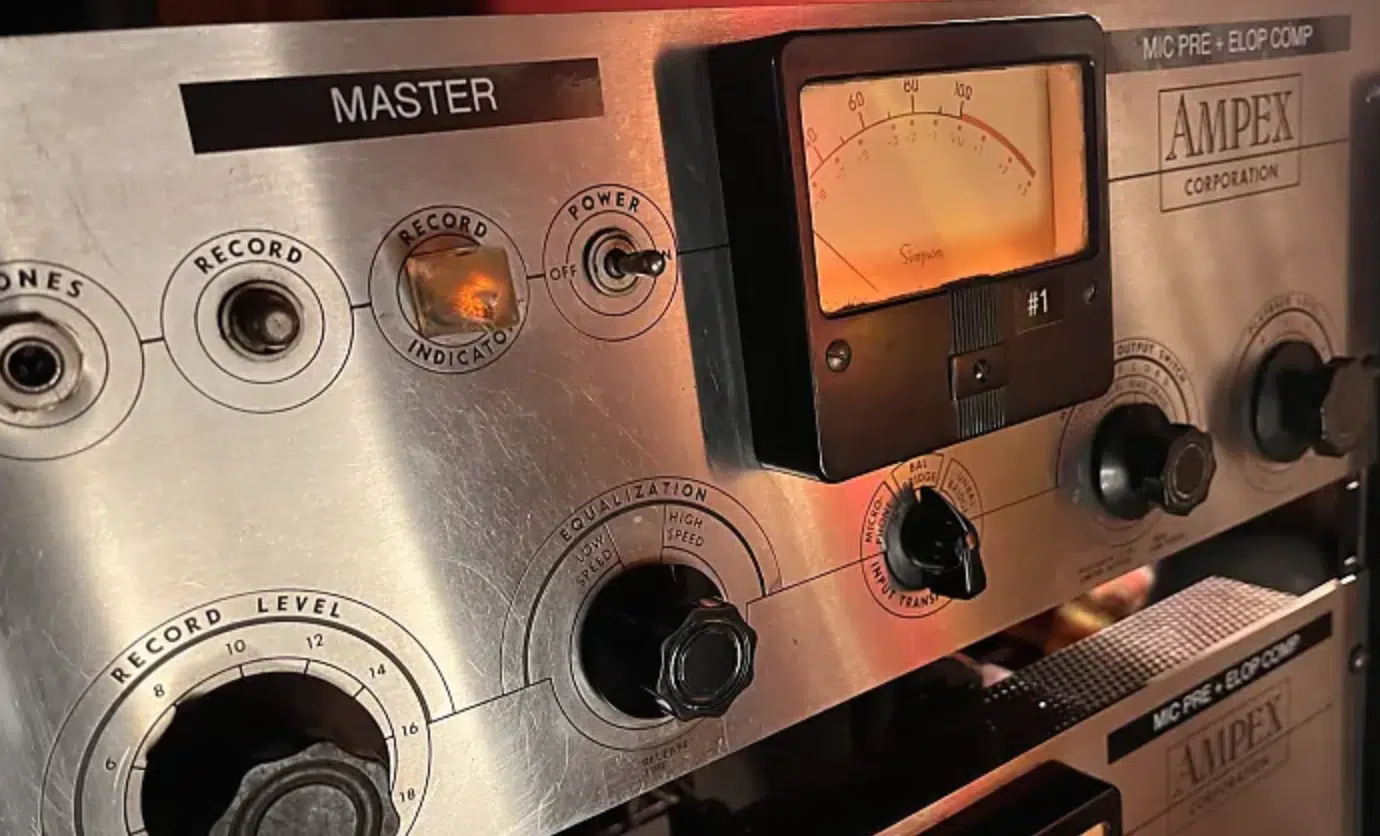
Analog audio saturation often associated with tape machines and hardware saturation, comes from pushing analog equipment beyond its limits.
This saturation occurs naturally as the incoming signal interacts with the electrical components of the analog gear.
-
Digital Audio Saturation
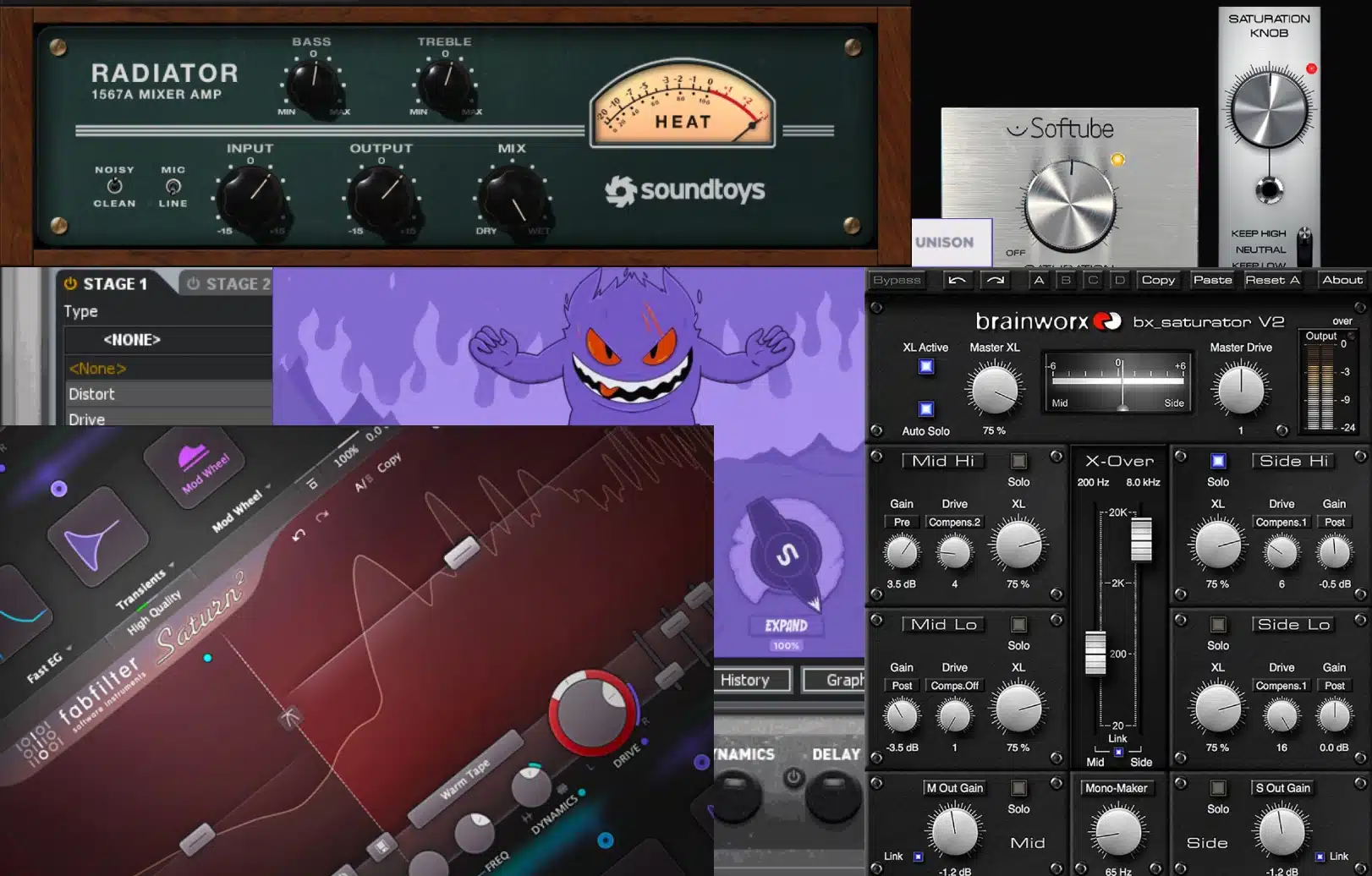
Digital audio saturation, on the other hand, is achieved using software plugins (saturation plugins).
Saturation plugins are designed to emulate the sound and feel of analog gear.
While they don’t introduce saturation in the same physical way, top-notch saturation plugins can be eerily accurate in recreating that analog warmth.
This is mostly thanks to ingenuity and creative sound design.
A key difference is flexibility:
- Analog hardware 一 Has its unique flavor, depending on the device used.
- Digital plugins 一 Offer a wide range of saturation colors.
This makes digital saturation a versatile tool for music producers, allowing for a broader palette of sounds.
It’s essential, though, to recognize the value of both; while digital sound offers flexibility, analog sound brings authenticity.
Often, a hybrid approach, combining analog hardware sound with digital precision, can yield ideally dynamic tracks.
The Types of Saturation: A Deep Dive
Diving into the world of saturation in music, you can quickly discover many variations, each with its unique tonal signature.
From the warmth of tape saturation to the clarity of transistor saturation, understanding these nuances can elevate your music production (and digital recording) to new heights.
-
Understanding Tape Saturation
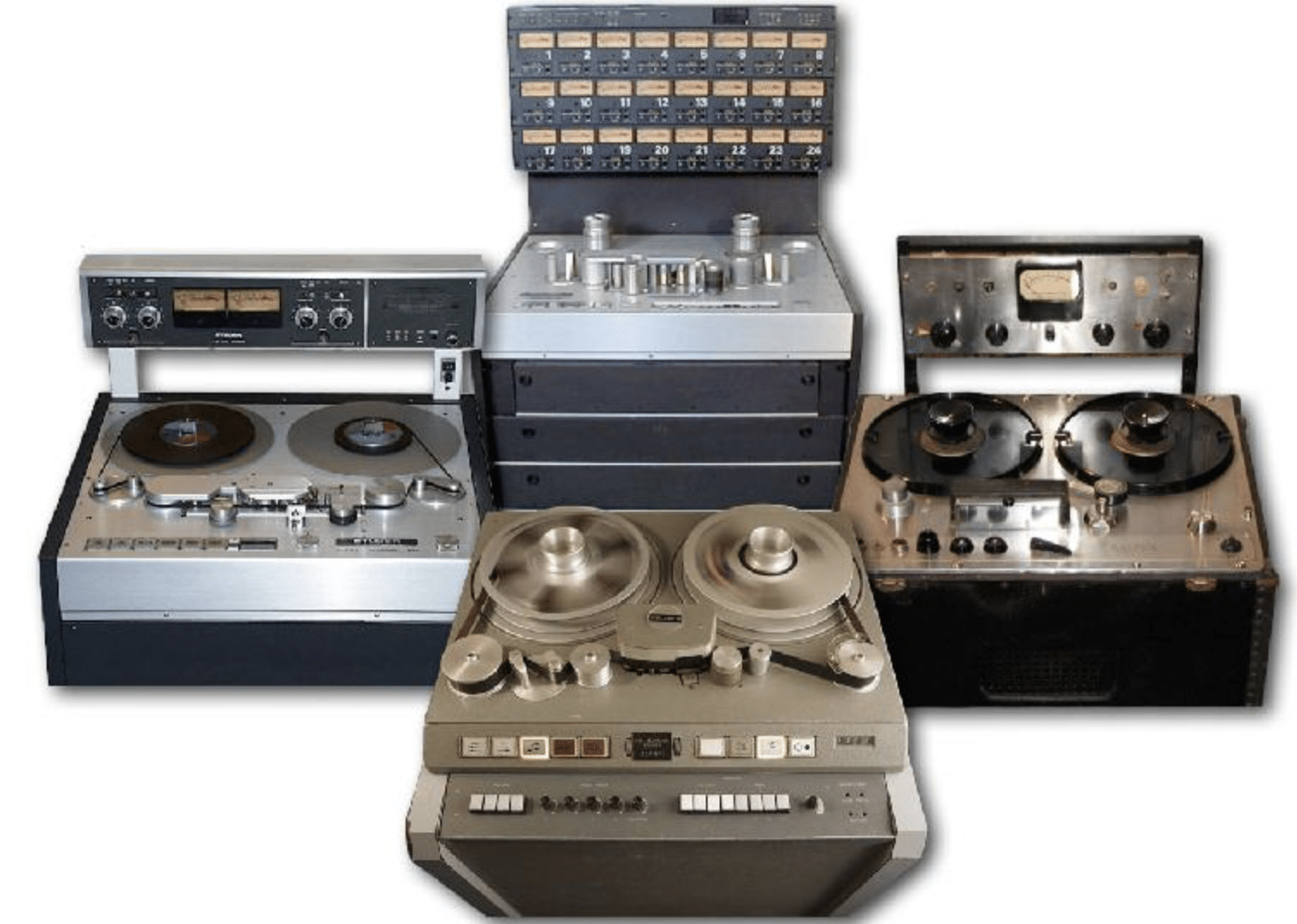
Back in the day, tape saturation was the byproduct of meticulously recording onto an analog tape machine.
As you pushed the tape harder, you introduced harmonic distortion that added a warm, fuzzy character to the sound.
The beauty of tape saturation lies in its ability to smooth out transients.
Where hard-hitting drums are central, tape saturation can make those drums sound powerful and smooth.
This successfully avoids any digital harshness or clipping.
Tape machines (with their classic analog sound) have a particular frequency response 一 boosting specific high frequencies and attenuating others.
This adds to the unique sonic imprint of tape saturation.
NOTE: Tape saturation is your go-to when looking for that classic sound reminiscent of old-school recordings.
However, while a genuine tape machine is scarce and often expensive, modern saturation plugins do a fantastic job emulating the tape saturation effect.
Therefore, you can emulate that analog hardware sound and warm vibe.
-
The Intricacies of Tube Saturation
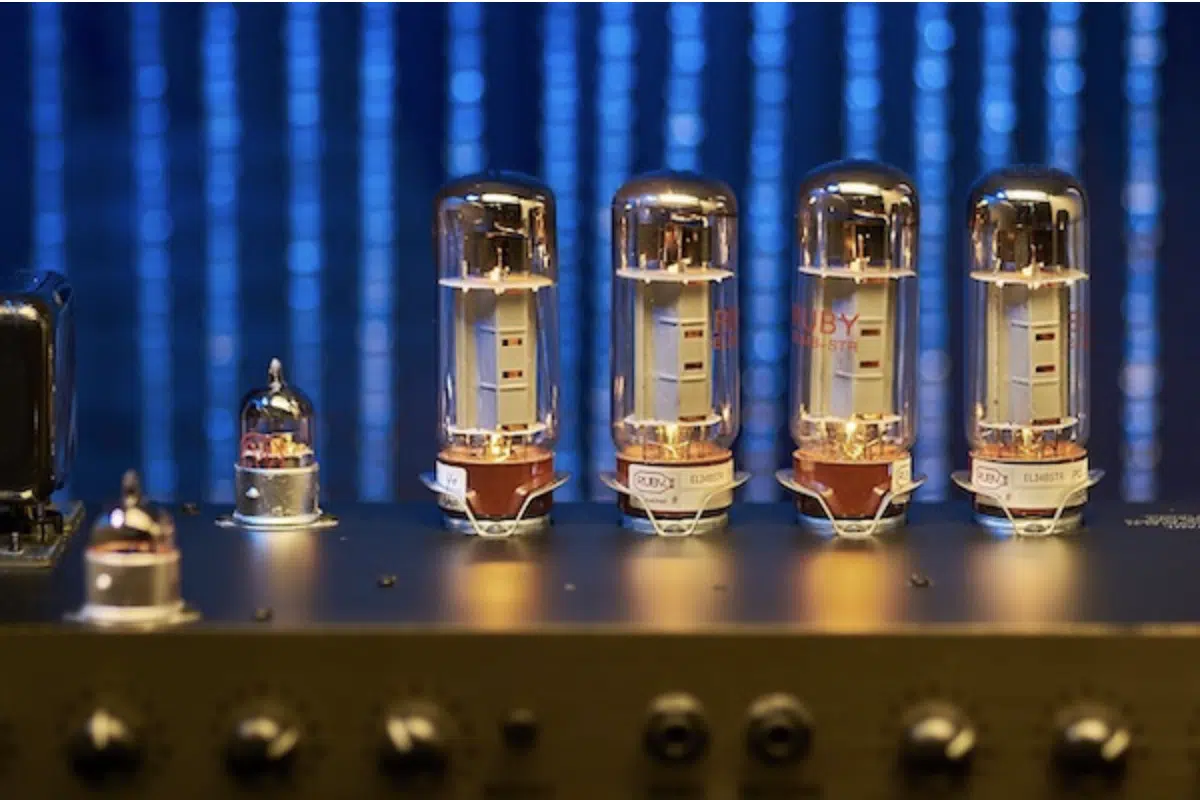
Tube saturation (often associated with the tube amp) provides a richness that differs from tape saturation.
When you push audio through a vacuum tube, the odd order harmonics begin to shine, creating a sound often described as “warm” or “smooth.”
For trap and hip-hop beats, think of those rounded, slightly overdriven 808s or basslines.
Tube saturation provides that beautiful, aggressive edge without making your sound harsh, irritating, or distorted.
The dynamics of tube saturation can breathe life into these elements 一 making them punchier in the mix.
The tube amp is renowned for its response to the incoming signal’s dynamics.
Play an electric guitar softly, and you get a clean sound… dig in, and you’re rewarded with rich distortion.
NOTE: This dynamic response is why tube saturation is often sought after for guitar tones in music production.
However, like tape machines, authentic tube gear can be expensive, which is where a saturation plugin that emulates tube saturation comes in.
These saturation plugins can capture the essence of tube saturation so you can get that warm sound without spending much money (or any money at all).
-
Exploring Transistor Saturation
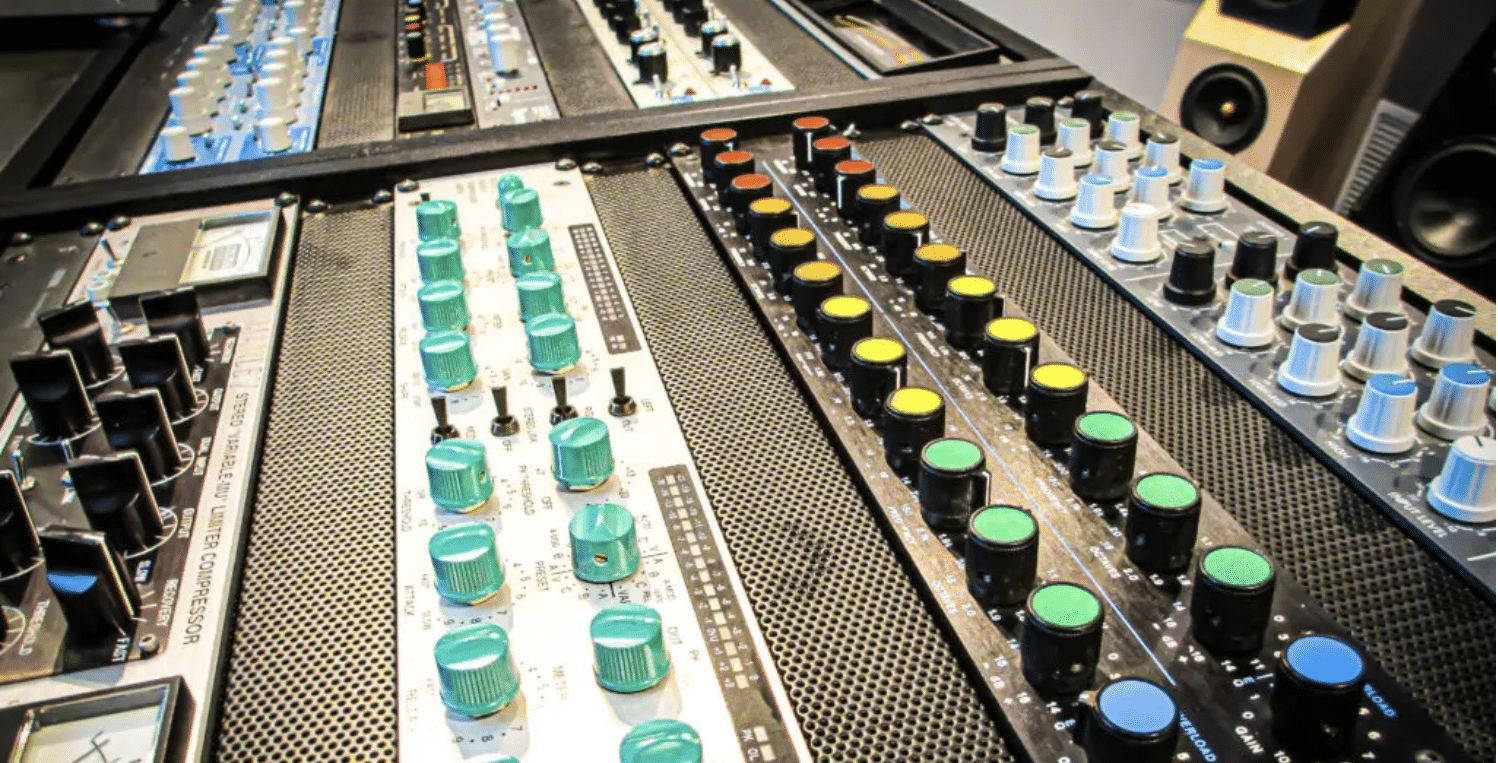
Unlike the smooth curves of tubes, transistors introduce a grittier form of saturation.
Transistor-based preamps and gear add both odd and even harmonics when driven, resulting in a brighter, edgier form of harmonic distortion.
This brightness is fantastic for adding clarity to elements in a mix (like snares or claps in trap music), which must cut through dense arrangements.
It can also give vocals an “in your face” quality without making them sound overly processed.
Transistor saturation can be linked back to iconic gear pieces used in the music industry 一 like certain preamps or guitar pedals.
These kinds of sounds have defined entire genres and eras of music.
In the digital realm, saturation plugins aim to replicate the traditional transistor saturation sound, which is:
- Edgy
- Clear
- Punchy
It’s a sound that can impart that certain vibe that music producers love to replicate and audiences love to hear.
Especially in genres that demand a strong presence and character, like hip-hop.
There are even a lot of free saturation plug ins that brilliantly emulate transistor saturation, so you don’t have to be restricted.
The Science Behind Saturation
Let’s unravel the mysteries behind the creative effect variations that saturation can impart; diving into the more scientific side.
We’ll start with the beloved and innovative harmonic distortion.
-
What is Harmonic Distortion?
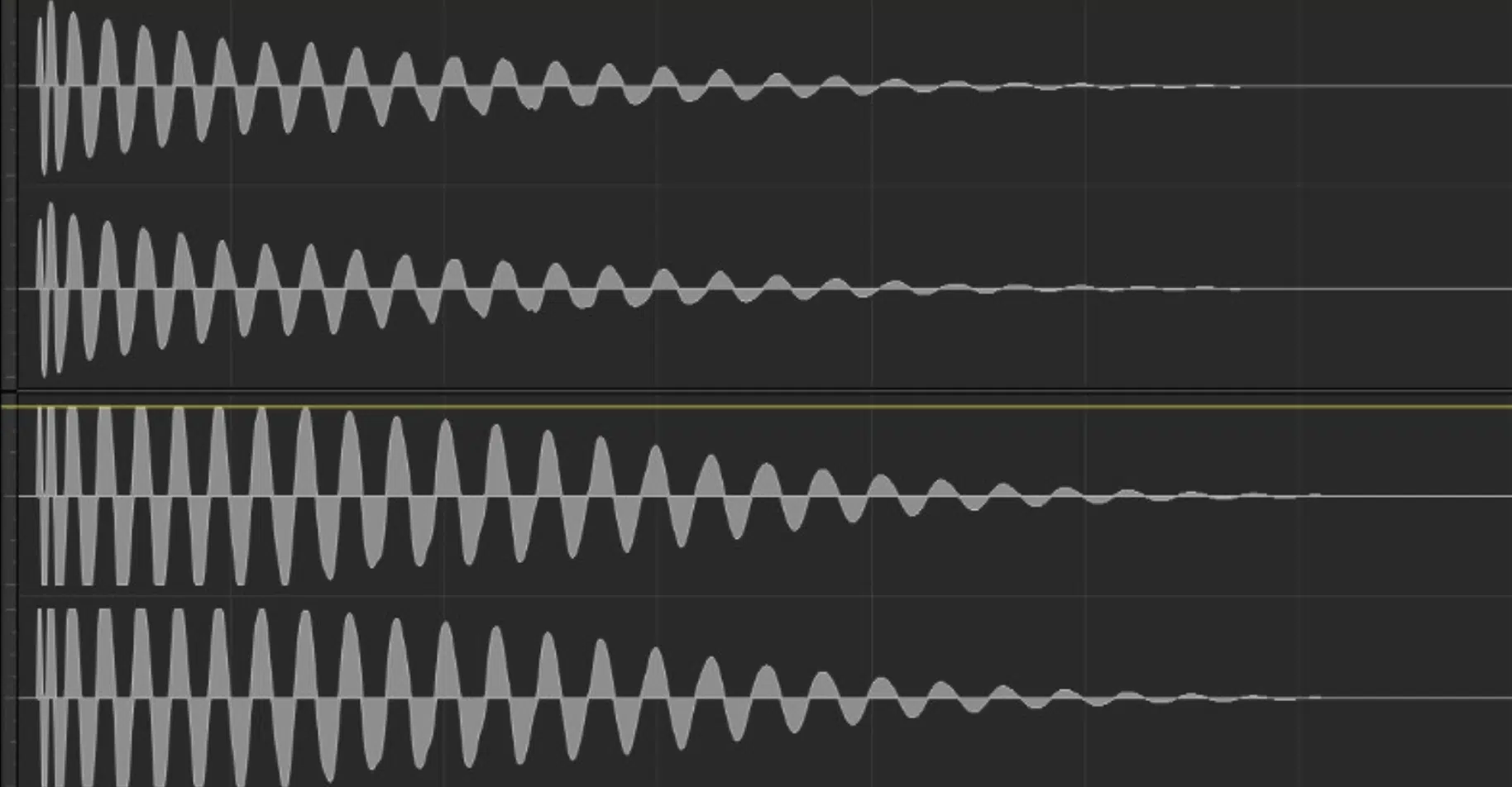
Harmonic distortion means introducing new frequencies to an original signal that wasn’t present before.
These newly introduced frequencies are multiples (harmonics) of the original frequencies in the audio signal.
For instance, if you have a simple tone at 100Hz and introduce harmonic distortion, you might add frequencies at:
- 200Hz
- 300Hz
- 400Hz
- Etc.
These additional frequencies can enhance the complexity of the sound.
Harmonic distortion isn’t inherently bad… in fact, in music production, it’s often desired.
This is because it thickens sounds, makes them richer, and in many cases, more pleasing to the ears 一 giving your listeners something to remember and get hooked to.
However, working with harmonic saturation is a balancing act.
Too little harmonic saturation and your sound might be too thin; too much harmonic saturation, you risk muddying your mix.
Knowing when and how to use saturation to introduce harmonic distortion is vital.
Not only to master saturation in general but also to make your tracks addicting, professional, and resonant.
-
The Role of Odd Harmonics & Even Harmonics
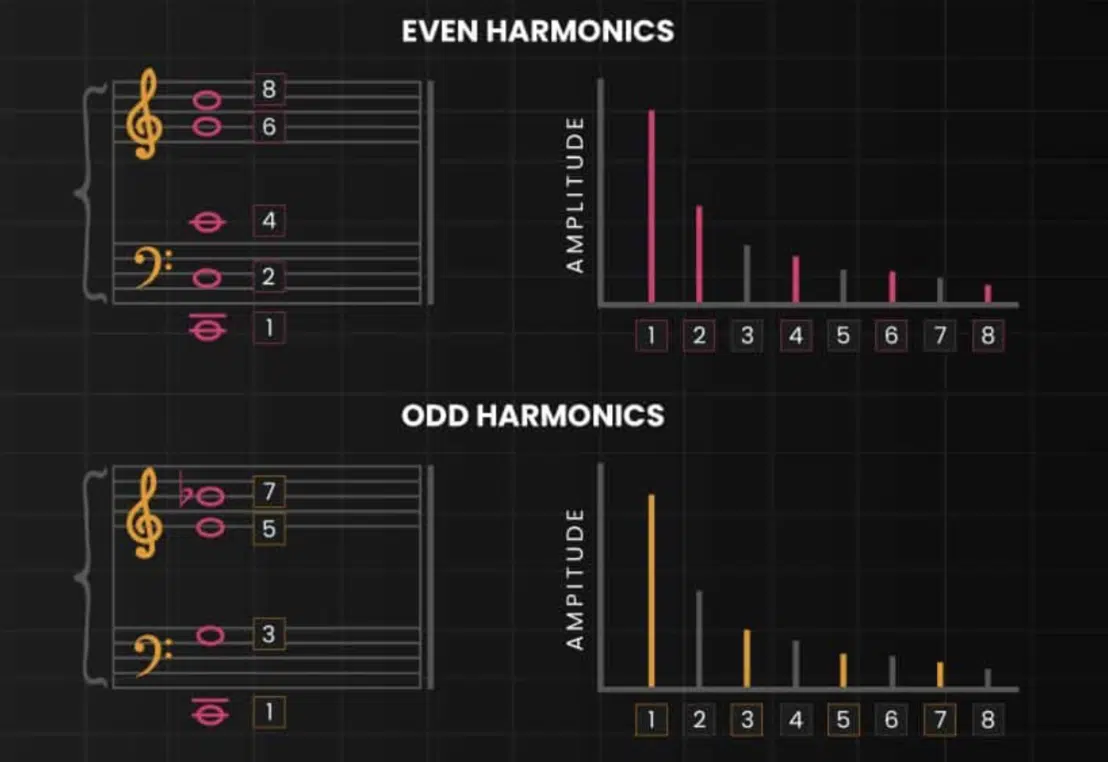
Harmonics in music can be broadly categorized into two distinct types:
- Odd harmonics
- Even harmonics
Being aware of the intricacies of both odd harmonics and even harmonics is vital in navigating the saturation world like a pro.
Odd harmonics (like the 3rd or 5th multiple) tend to sound edgier and can bring out the aggression in a sound.
Even harmonics are often associated with a smoother, more musical distortion.
They contribute to the warmth and fullness of a sound 一 particularly in the realm of the highly-desired tube saturation.
Knowing this distinction is crucial for music producers.
When you want to add grit to a snare or make an 808 more aggressive, you might lean towards saturation that emphasizes odd harmonics.
Conversely, when looking to warm up a vocal track or make a synth sound fuller, even harmonics via tube saturation or a similar method might be the answer.
Knowing which situation to apply odd harmonics vs. even harmonics will help you produce pristine, precise, enthralling beats.
-
Saturation and Perceived Loudness
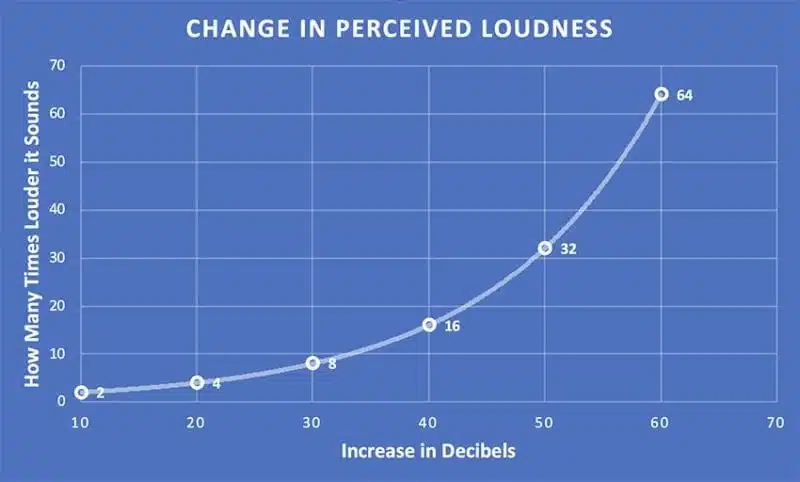
An intriguing aspect of saturation is its ability to make things sound louder without a significant increase in actual volume.
This is because the added harmonics fill the frequency spectrum, making the sound fuller.
In today’s music production, especially in the digital domain, achieving loudness without simple volume boosts is crucial.
Saturation allows us to increase the perceived loudness 一 ensuring our tracks are competitive in volume without risking digital clipping.
Especially in hip-hop and trap, where the beat needs to hit hard, using saturation strategically can make your tracks bang.
Without causing distortion or clipping issues, of course.
Practical Applications of Saturation in Music Production
When discussing implementing saturation in our digital tracks, practicality becomes paramount.
Harnessing the power of saturation plugins and techniques can transform your tracks, making them shine.
So, let’s break it down.
-
Saturation Plugins: The Digital Age Game-Changer
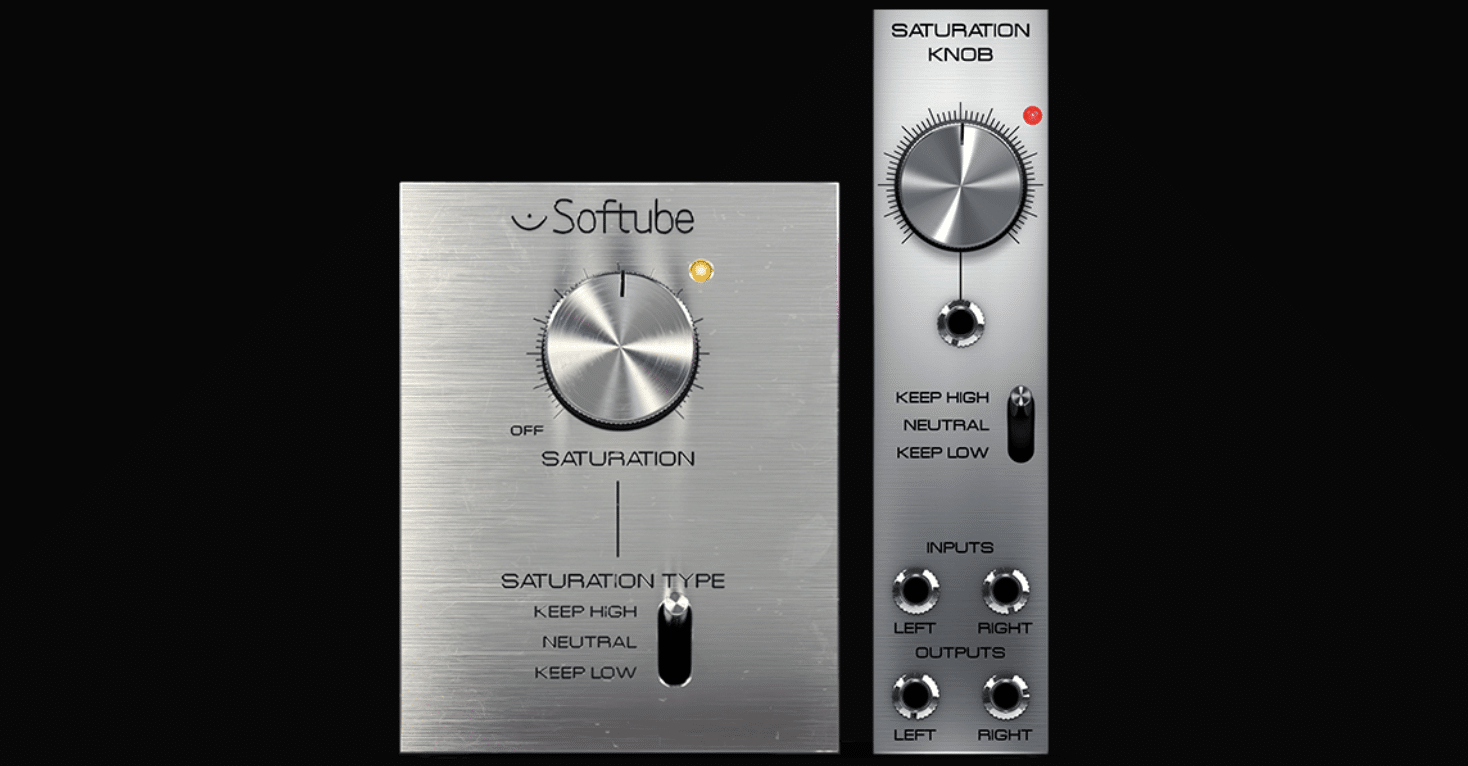
While analog gear offers a unique touch to sound, the digital age has revolutionized how music producers approach saturation.
Saturation plugins bring the iconic characteristics of tape machines, tube amps, and transistor preamps right into our DAWs 一 making them accessible to everyone.
One of the prime benefits of using saturation plug ins is the flexibility they offer.
With them, you’re able to:
- Switch between different saturation types
- Adjust the intensity
- Even blend various kinds
All of this without the hefty price tag or the need for a massive studio space.
For digital hip-hop/trap producers, these saturation plugins can be a game-changer.
You can apply the warm sound of analog tape on your drums and blend it with the aggressive edge of transistor saturation on your leads.
Then, you can smooth out the bass with some highly renowned tube warmth (all without leaving your home studio).
Saturation plugins have become increasingly sophisticated, with some even emulating the particular frequency response and subtle nuances of specific analog equipment.
With saturation plugins, you can get incredibly close to that sought-after analog hardware sound, right from your laptop.
-
Techniques: Mixing and Mastering with Saturation
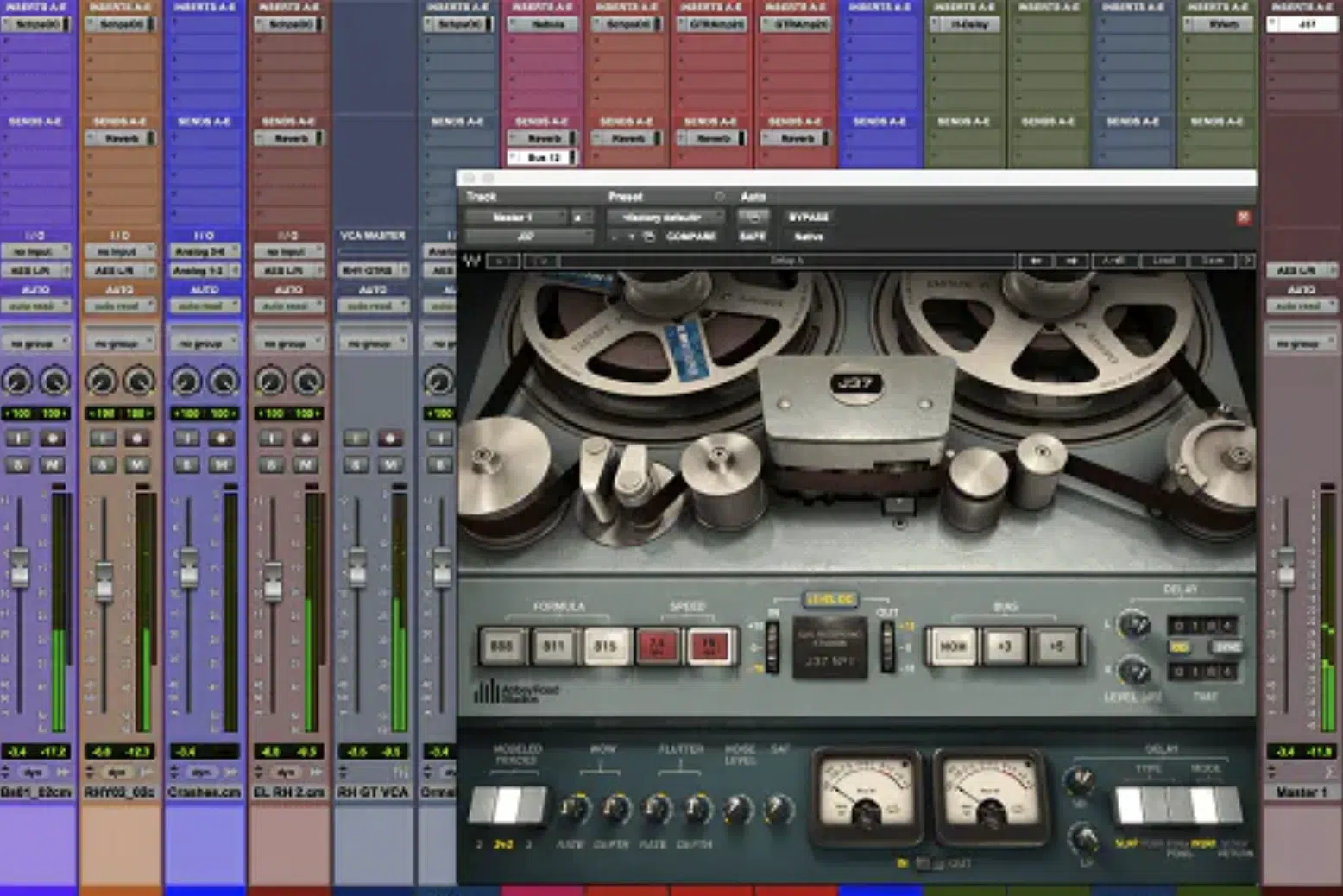
Using saturation in the mixing and mastering stages can turn a basic mix into one that instantly captures people’s attention.
When applied judiciously, it can glue together disparate elements and make your track sound cohesive/polished.
During the mixing stage, you can use saturation to make certain elements stand out.
For example, by adding tube saturation to a vocal track, you can give it warmth and presence 一 making it sit perfectly atop a dense mix.
During mastering, a subtle form of saturation settings across the master channel can enhance a track’s warmth and depth.
It bridges the gaps in a mix, ensuring that everything from the low-end thump to the high-end sparkle comes through with clarity.
NOTE: Professional mix engineers and mastering engineers often employ saturation to prevent digital clipping.
By saturating the peaks of an audio signal, they can maintain the perceived loudness without the sound distorting or losing its character.
-
Tips for Using Saturation on Individual Tracks
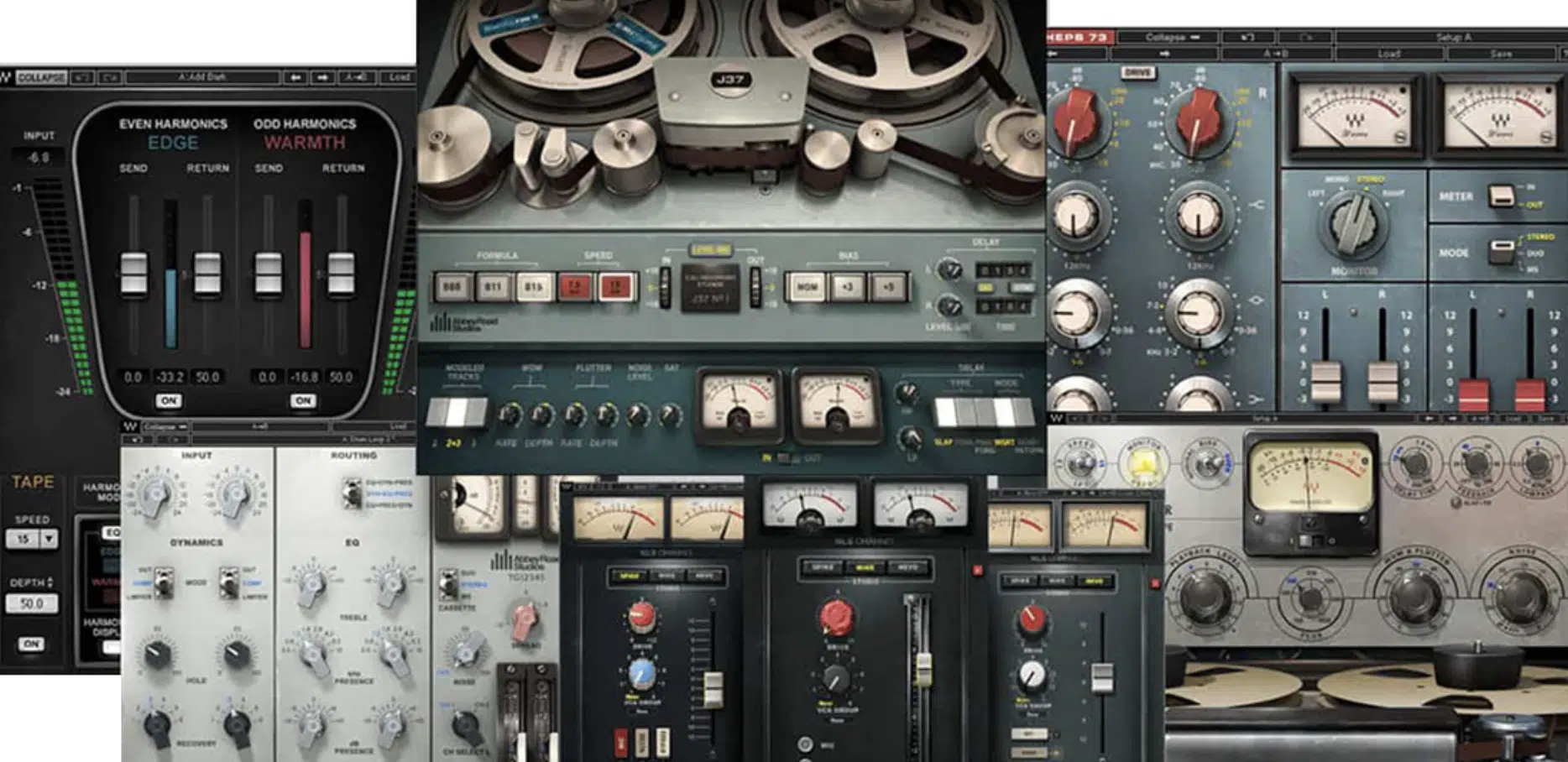
When it comes to individual tracks, the key is to be intentional.
Every unique sound (snare, a synth, vocal, etc.) can benefit from saturation in music; that goes without saying.
However, the type and amount will differ, depending on your intentions.
For instance, adding a hint of tape saturation to a snare can give it a classic sound reminiscent of old-school hip-hop records.
It can emphasize the snap and help it cut through the good mix without overpowering other elements, avoiding muddiness or clashing.
808s, a staple in trap music and hip-hop, can be given an aggressive edge with some simple transistor saturation.
It accentuates the harmonics 一 making the 808 sound fuller and more pronounced.
When it comes to melodic elements, like synths or pianos, a bit of tube saturation can go a long way, adding depth and warmth.
It’s like putting a comfortable blanket around the sound, exuding a cozy, inviting vibe that resonates with your audience.
-
Parallel Saturation: Why and How?
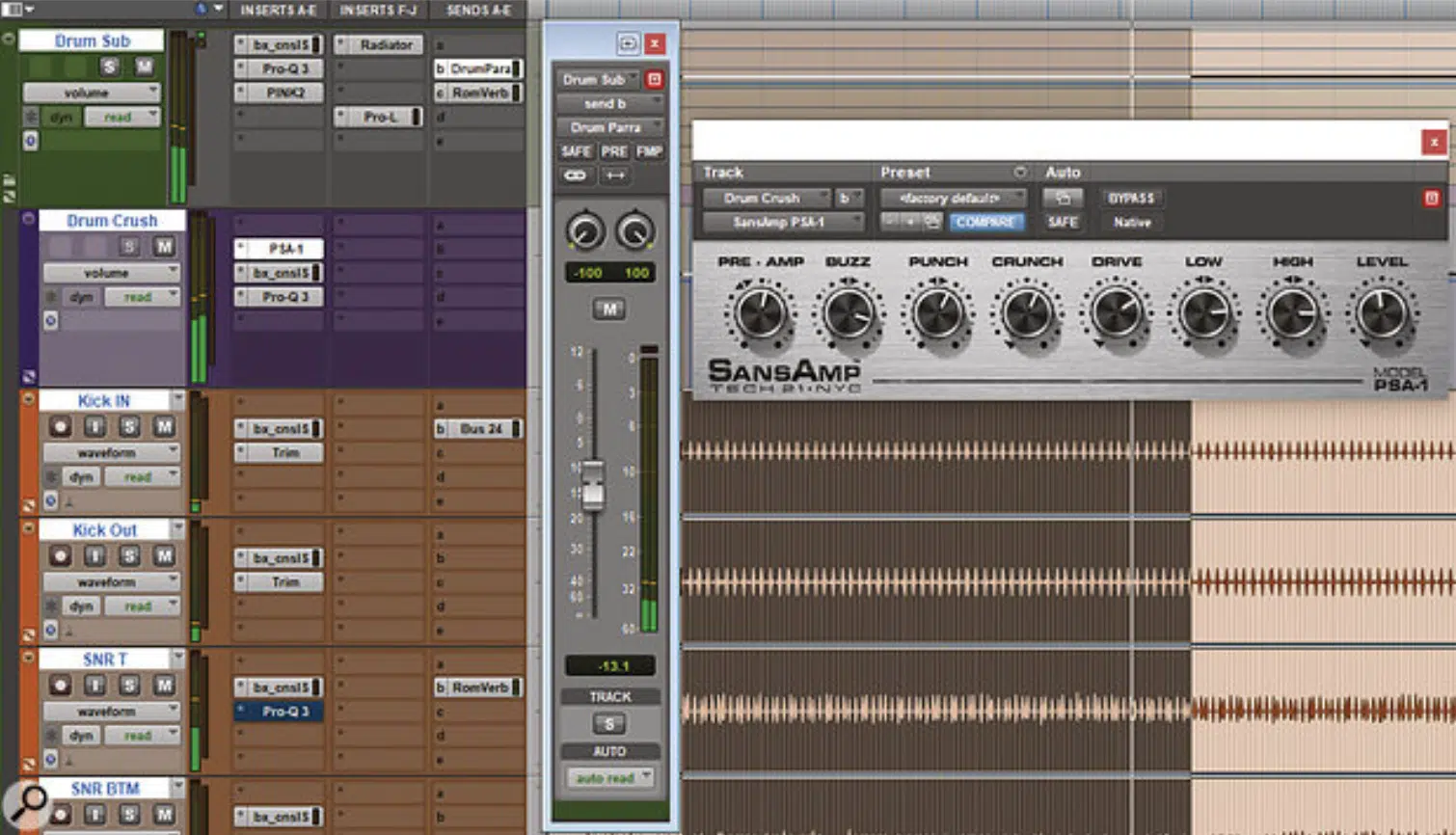
Parallel saturation is a music production technique that blends the saturated signal with the original signal.
Using saturation in this manner allows you to preserve the original signal’s clarity while introducing the rich harmonics and characteristics of the saturated sound.
In a hip-hop beat, try this on your drum bus.
By mixing the clean drum sounds with a heavily saturated version, you get the punch and clarity of the originals combined with the weight and aggression of the saturated version.
Another great application is on vocals.
Instead of saturating the main vocal directly, you can simply:
- Duplicate it
- Saturate the duplicate heavily
- Blend to taste
This parallel saturation technique provides a thicker vocal sound without compromising intelligibility (which is key).
The trick to mastering parallel saturation lies in harmony and balance.
Too much of the saturated signal can muddy the mix, while too little might not produce the desired effect.
It’s all about finding that sweet spot.
-
Soft Knee Compression and Saturation
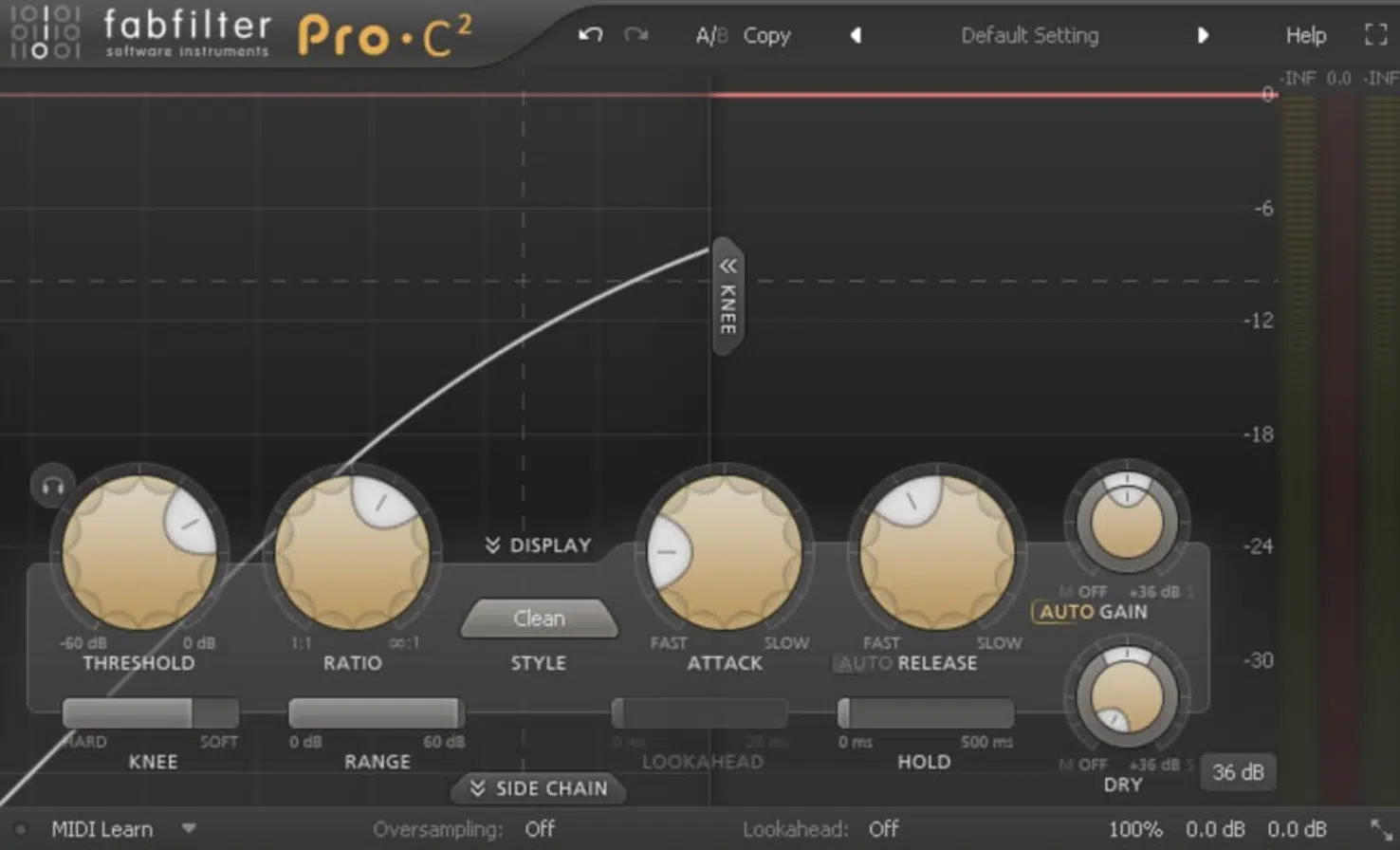
When diving into the world of saturation in music, you’ll need to know all about soft knee compression as they go hand-in-hand.
Soft knee compression introduces subtle compression gradually, making it sound more natural and authentic.
Combined with saturation, it can enhance the harmonics while maintaining your unique sound’s dynamics.
- Soft knee compression 一 Ensures nothing peaks too aggressively.
- Saturation 一 Enriches the overall character.
For those booming trap kicks or thick basslines, this combination ensures they remain punchy and dynamic but with added richness and body.
This makes them way more captivating in the mix without any hard-clipping compression.
Another advantage of pairing soft knee compression with saturation is to control and manipulate transients.
For sharper elements like snares or hi-hats, this combo can smooth out the peaks 一 making them sit better in the mix while retaining their crispiness/character.
Saturation in Music: Final Thoughts
Saturation in music isn’t just a fancy term thrown around by professionals.
It’s a quintessential technique that can seriously uplift your beats.
The various methods of applying saturation in music, from tape saturation to transistor saturation, are not just tools, but the very essence that breathes life into your tracks.
However, the real magic happens when you can combine the knowledge of saturation in music with hands-on experience.
That’s why I’m thrilled to recommend these Free Project Files.
These come packed with 3 free project files, each available in Ableton, FL Studio, and Logic Pro.
It’s a fantastic opportunity to dive in and see exactly how industry experts utilize saturation in music.
By exploring these project files, you’ll get a firsthand look at the intricate ways pros use saturation to bring warmth, depth, and character to their tracks.
Incorporating the techniques of saturation in music will not only enhance the quality of your tracks but also speed up your workflow 一 allowing you to produce at expert speed.
So, go on, immerse yourself in the world of saturation in music and watch your tracks evolve and your skills sharpen!
Until next time…







Leave a Reply
You must belogged in to post a comment.